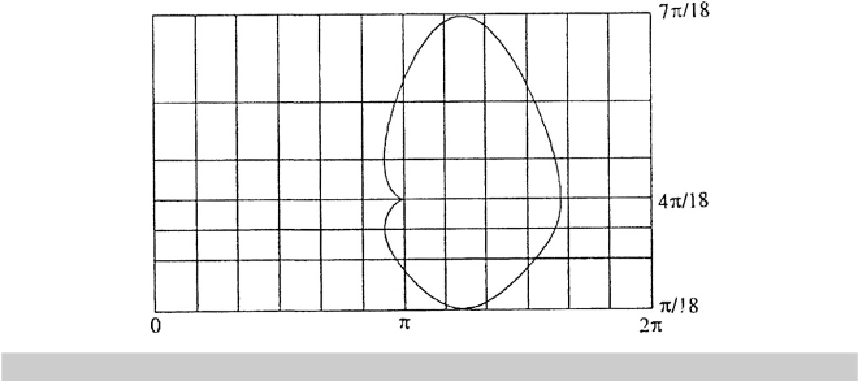Geography Reference
In-Depth Information
At
first
we are deriving differential equation which generates the special curve
clothoid.
The
initial value problem of such a differential equation is solved in terms of the
Fresnel integrals.
Secondly
we succeed to solve the
Fresnel integrals
by a power series expansion the azimuth
functions (
sinα
(
s
)
,cosα
(
s
)) relative to the
initial curvature κ
0
of the
clothoid.
In this way the
coordinate functions
x
s
0
) are derived, namely
for (
x, y
) as conformal coordinates of
Gauss-Krueger
or
UTM type. Thirdly
we take advantage
of
univariate series inversion
in order to derive the
clothoid function y
−
x
0
=
f
(
α
0
,κ
0
,s
−
s
0
)and
y
−
y
0
=
g
(
α
0
,κ
0
,s
−
x
0
,α
0
,k
0
)
.
As special cases the straight line and the circle are included.
Fourth
we present case studies for
the local representation of the
clothoid
for various degrees of approximations.
−
y
0
=
h
(
x
−
Initial value problem of the clothoid
In the
Gauss-Krueger or UTM plane
we consider a planar curve x(s) which is parameterized
by its
arc length s.
For a local representation of such a curve we introduce the
orthonormal Frenet
frame
fixed to the
origin 0. By means of
Gram-Schmidt orthonormalization
a constructive set-up of such a moving
frame is
{
f
1
,
f
2
}
which
moves
with respect to the
orthonormal Euclid frame
{
e
1
,
e
2
|
0
}
x
−x
|x
x
f
1
=
x
(
s
)
,
f
2
=
(23.123)
x
−
x
|
x
x
Here
the standard
Euclidean
norm
(
l
2
−norm
).
μ
:=
f
1
normalized
normal vector
of the planer curve
x
(s). The moving frame
{
f
1
(
s
)
,
f
2
(
s
)
}
is related to the fixed frame
{
e
1
,
e
2
|
0
}
by
·|·
denotes the standard
Euclidean scalar product
as well as
|·|
f
∗
=[
f
1
,
f
2
]=[
e
1
,
e
2
]
R
∗
=
e
R
∗
(23.124)
|
RR
∗
=
I
2
, |
R
|
=
where
R
is the set
R
∈
SO
(2) of orthonormal matrices, namely
R
∈{
R
∈
R
2
×
2
+1
}
R
∗
. denotes the transpose of
R
.
Z
2
(
n
=3
,a
= 2) onto a developed cylinder
Fig. 23.27.
Conformal mapping of the church tower of onion shape
C
g
(
V
)



Search WWH ::

Custom Search